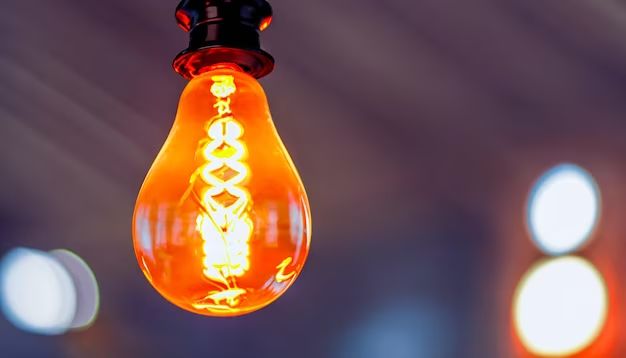Yes, there are light bulbs that produce heat in addition to light. The main types of light bulbs that produce heat are incandescent and halogen bulbs. These bulbs work by passing electric current through a wire filament, which heats up and glows to produce light. A significant amount of the energy consumed by these bulbs is given off as heat rather than visible light.
Page Contents
How do incandescent and halogen bulbs produce heat?
In an incandescent bulb, the filament is enclosed in a glass bulb containing an inert gas. When electricity passes through the filament, it heats up to very high temperatures, causing it to glow and produce light. The majority of the energy supplied to an incandescent bulb is converted into infrared radiation, i.e. heat. Only about 5-10% of the energy is converted into visible light.
Halogen bulbs are a type of incandescent bulb with a small amount of halogen gas added inside the bulb. This allows the filament to burn hotter and brighter while slowing down evaporation of the filament. Like regular incandescents, halogens convert most of their energy consumption into heat. However, halogen bulbs are generally more efficient, converting 8-12% of energy into visible light vs. 5-10% for a regular incandescent.
How much heat do these bulbs produce?
The amount of heat produced by an incandescent or halogen bulb depends on its wattage. Here’s a quick guide:
- 40W bulb – 85% of energy produces heat, 34W heat produced
- 60W bulb – 90% heat, 54W heat
- 75W bulb – 92% heat, 69W heat
- 100W bulb – 95% heat, 95W heat
As you can see, a standard 100W incandescent bulb converts around 95% of the electricity it uses into heat, producing about 95 watts of heat. By comparison, an equivalent 14W LED bulb only produces around 3-5W of heat for the same brightness.
Examples of heat-producing light bulbs
Here are some common examples of incandescent and halogen bulbs that you can buy which will produce significant heat:
- GE Classic 100W incandescent bulb
- Philips 60W classic incandescent bulb
- Sylvania 75W halogen bulb
- Feit Electric 40W clear miniature incandescent bulb
These bulbs are readily available from hardware stores, lighting retailers, and online marketplaces like Amazon. Just check the wattage rating – the higher the watts, the more heat produced.
Uses for heat-producing light bulbs
The heat given off by incandescent and halogen bulbs has some useful applications, such as:
- Reptile heating – The basking spot in a reptile terrarium needs to be kept at a certain temperature. A heat-producing bulb can provide both light and localized heat.
- Chicken egg incubators – Incubating eggs requires steady heat. An incandescent bulb shining into the incubator can help maintain the optimal temperature.
- Warming trays – Keeping food warm for parties or holiday meals. Positioning an incandescent bulb above the tray will keep contents gently heated.
- Drying out damp spaces – Placing a heat-producing light in a basement, attic or other enclosed damp space can help eliminate excess moisture in the air.
Considerations when using heat-producing bulbs
If you plan to use incandescent or halogen bulbs for their heat output, keep the following in mind:
- Fire hazard – Make sure bulbs are not covered or touching flammable materials that could ignite.
- Burn hazard – Don’t touch bulbs while on or shortly after turning off. They can quickly reach high temperatures.
- Ventilation – Allow adequate air circulation around the bulbs to dissipate heat safely.
- Energy efficiency – Consider lower wattage or LED alternatives to save on electricity costs.
- Safety – Follow manufacturer guidelines carefully if using for specialized heating like incubators.
Conclusion
While incandescent and halogen bulbs are very inefficient sources of light, their high heat output can be advantageous for certain applications. Just use proper precautions, as you would with any heat source. If you simply need a light bulb and don’t need the heat, LED bulbs are a much better option for saving energy and money.
